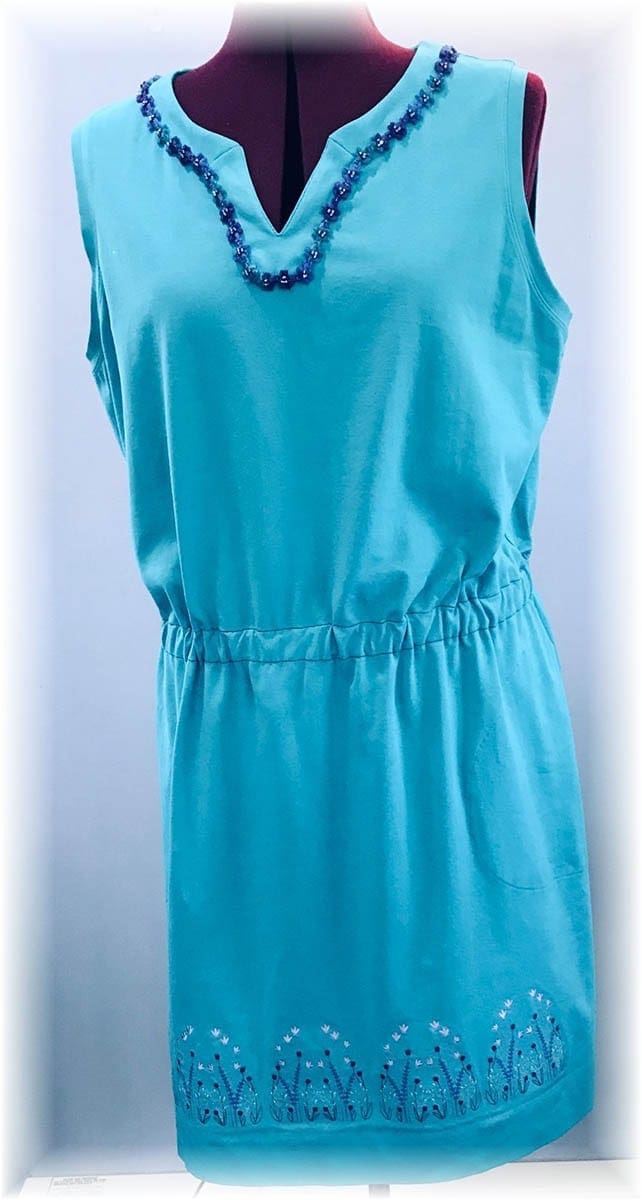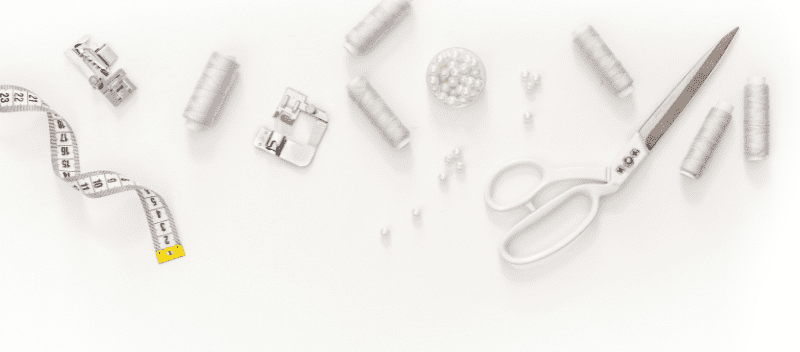How To Fix Ripped Jeans: 5 Fun and Creative Ways to Mend Jeans
While ripped jeans may be all the rage right now, sometimes your jeans may get an unwelcome rip that just needs to be fixed! Thankfully, mending jeans can be accomplished with a combination of machine and hand-stitching. Regardless of the technique used, mending jeans is a creative and fun way to express your personal style!
Today, I’m bringing you my five favorite ways to fix ripped jeans! These range from “invisible” mending to purposefully obvious and beautiful visible mending. Let’s fix your ripped jeans!
Mending a Rip with an Iron-On Patch

If you’re looking for a quick and uncomplicated way to mend your jeans, a store-bought iron-on patch may be the way to go. Keep in mind that this method will not be “invisible” – the patch is applied to the outside of the jeans. But you have a lot of creative freedom here to choose a patch that fits the look you’re going for – you can find a denim patch that closely matches the color of your jeans, or you can pick up a patch with a fun design! You can find iron-on patches at your local craft store or online (I loved THESE adorable ones on Amazon).
How do you mend ripped jeans with an iron-on patch?
I needed to mend this small hole in one of my favorite pairs of work jeans. Since they are work jeans for outside work, I don’t really care if the patch is visible or not – so I used THESE Dritz denim iron-on patches.

I chose one of the smaller patches that was light wash to match my jeans more closely.

To apply the patch, follow the manufacturer’s directions for the patches you’re using. In my case, I first warmed up the area to be patched with my iron set to the cotton setting. Next, I placed the patch over the hole and pressed it firmly with my iron for 45 seconds. To ensure that the edges were secure, I then pressed each of the edges for an additional ten to fifteen seconds.


Once the patch is ironed on, you can stop here if you like – but I highly recommend that you secure it with some stitching as well. These iron-on patches never seem to survive through several washings without any stitching. I secured my patch by zig zag stitching around the edges of the patch with a color matched thread.

Patching a Rip with Scrap Denim
For a more professional method of mending your jeans, create a patch from leftover denim. It’s an excellent solution and enables you to achieve a closer color and fabric texture match. TIP: When hemming jeans, it’s always advisable to keep the cuttings for future patching projects. Patching with scrap denim will often last longer and wear better than an iron on patch; especially if the hole is in a high wear area (like the inner thighs or bum).
Also, you can patch your jeans either with a sewing machine or by hand sewing! The machine stitching will be faster, more secure, and will have a higher stitch count; hand sewing will be less visible and have a much lower stitch count. Regardless of the method selected, matching the thread color to the color of your jeans will minimize the patch appearance and make it inconspicuous!
The first step is to cut a piece of scrap denim fabric that extends beyond the edges of the hole by at least ¼ inch in all directions.

Place the denim patch on the inside of the jeans behind the hole you’re mending. Pin it in place or secure it with basting tape.
Here’s how it looks from the outside:

And here’s how it looks from the inside:

To repair the hole, start by selecting the straight stitch on your sewing machine and sew 1/8 inch from the edge of the hole. Avoid loose threads and frayed fabric—this row of stitching needs to be sewn on undamaged denim fabric. Once completed, switch to a zig zag stitch, and sew along the edge of the hole to secure it to the patch. A zigzag stitch will provide more strength than just a straight stitch and it will secure the torn edges to the patch. It’s tempting to only stitch the edges of the rip down, then trim the patch – but I find that the repair won’t last as well if you don’t secure the patch. To secure it, sew a second row of the zig zag stitching further away from the hole. This stitching will be visible so take your time and plan your stitching path. I chose a square design.
Here’s how mine looked from the outside:

And from the inside:

Mending a Small Rip by Hand Sewing
If you just have a small rip in your jeans, hand sewing the rip closed will be the easiest and most “invisible” method of fixing them. Just make sure to choose an all-purpose polyester thread that matches the color of your jeans. Also, giving the area an added boost of stabilization from the inside with a piece of fusible interfacing, will help your repairs last! After applying the interfacing, simply stitch the rip closed.
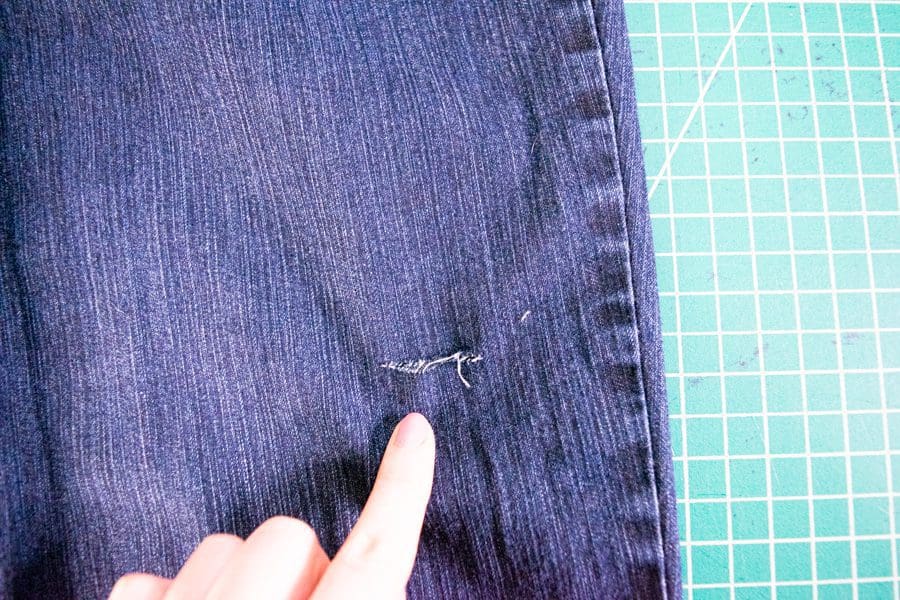
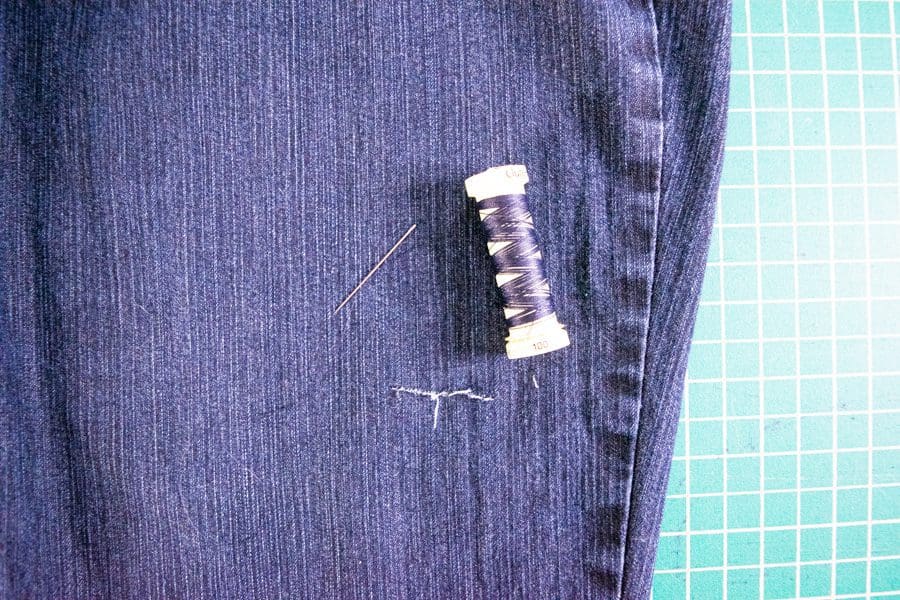
I quickly sewed this rip closed with a whipstitch (HERE is a tutorial on how to do a whipstitch) and matching thread. It’s not that noticeable and the thread match is great!
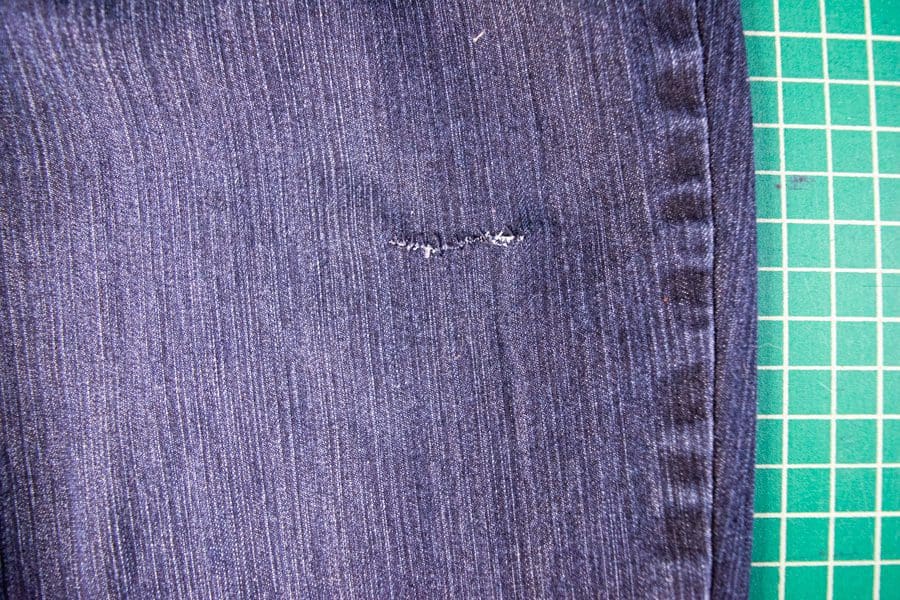
Sashiko Mending
If the less conspicuous methods of fixing your ripped jeans are just a little too boring – consider trying visible mending! One of my absolute favorite visible mending techniques is Sashiko mending. Sashiko mending is a beautiful mending technique originating from Japan that highlights the beauty of repairing a garment many times over its life, making it stronger and more unique with each repair.
I have a pair of jeans that seem to be wearing the fastest below the back pockets. I already mended the right pocket about a year ago, but now the left pocket needs fixed as well. I’m excited to add another patch and use a different stitch pattern! Many of the most common stitch patterns involve straight lines and squares (as seen in the second photo in THIS article). But you don’t have to be confined to just straight lines! If you’re looking for ideas on other designs THIS article has quite a few fun ones.
Today I’m just going to be doing a simple straight-line design with a patch on the inside of the jeans. With visible mending it’s up to you if you want the patch to be on the inside or the outside – I think a mix of both looks really cool if you’re mending multiple rips. Also, you don’t have to just choose one or the other – my previous repair on these jeans included a patch on the inside and a smaller patch on the outside!
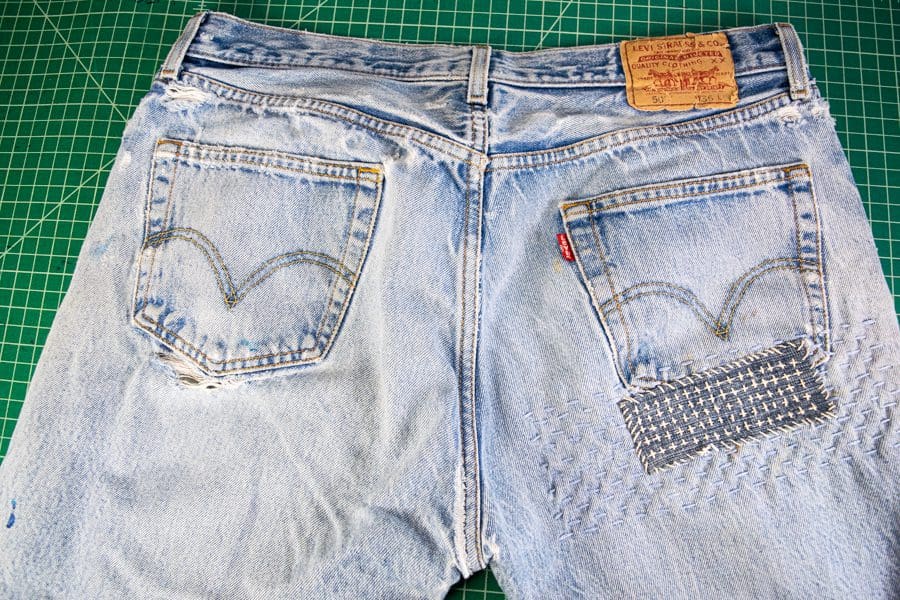
My first step for mending the left pocket on these jeans was to cut a patch large enough to cover the rip and extend past it at least ½ inch in every direction. I also finished all the edges of my patch with my serger to keep it from fraying – this is optional though. I didn’t finish the patch I used on the other side and the fraying is minimal even a year later.
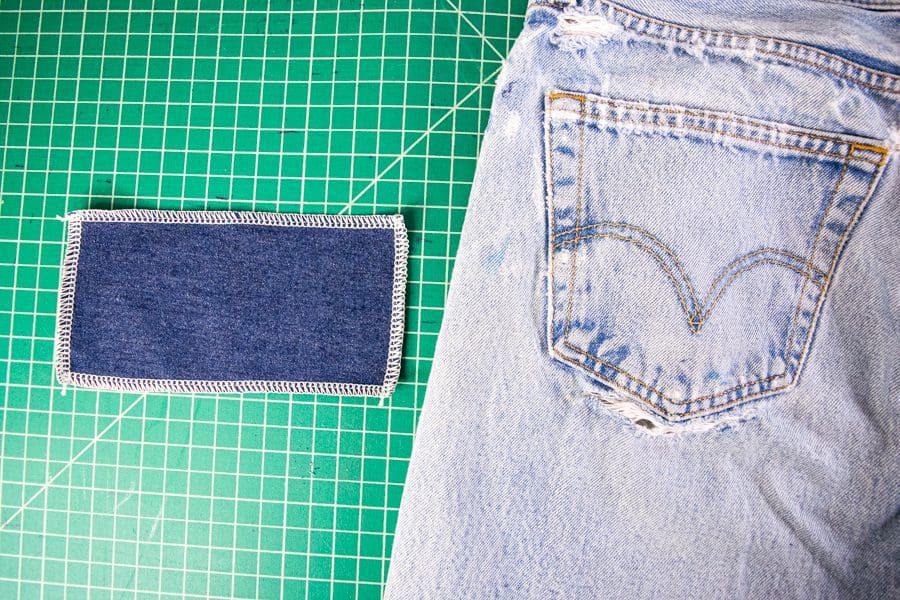
Next, I pinned the patch inside the jeans, centering it under the rip.
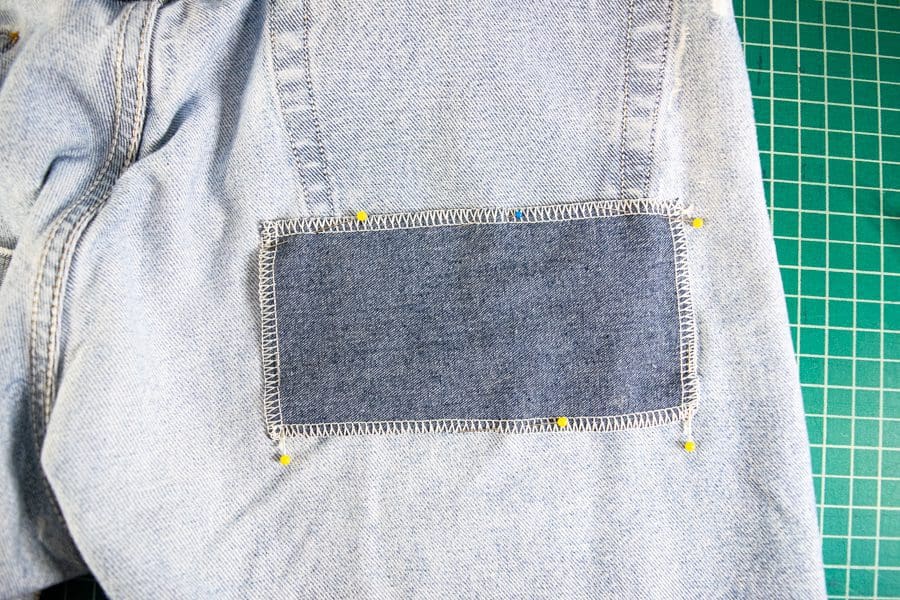
With the patch pinned in place, I then turned my jeans right sides out again. Now is the critical part for making your stitching even – draw a grid! I drew a ¼ inch grid over my patch on the outside of the jeans – each parallel line is ¼ inch away from the ones next to it. To draw the grid, I used tailor’s chalk and drew all the horizontal lines. Then, I went back over it to draw in all the vertical lines.
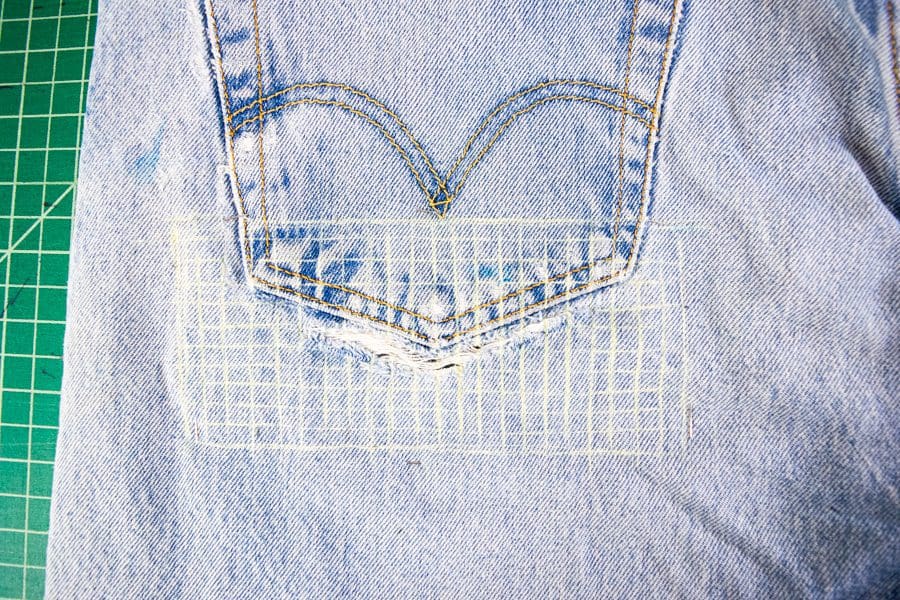
You can get Sashiko thread for this, but I’m just using embroidery thread because that’s what I had easy access to, and it works great! You’ll also need a tapestry needle or embroidery needle that will accommodate the thick thread. First, I knotted my thread tail then brought up my thread from the inside to the outside in the upper right corner of my grid. I pushed the needle back down to the inside at the next point where my grid lines intersect (1/4 inch down). That forms the first stitch!
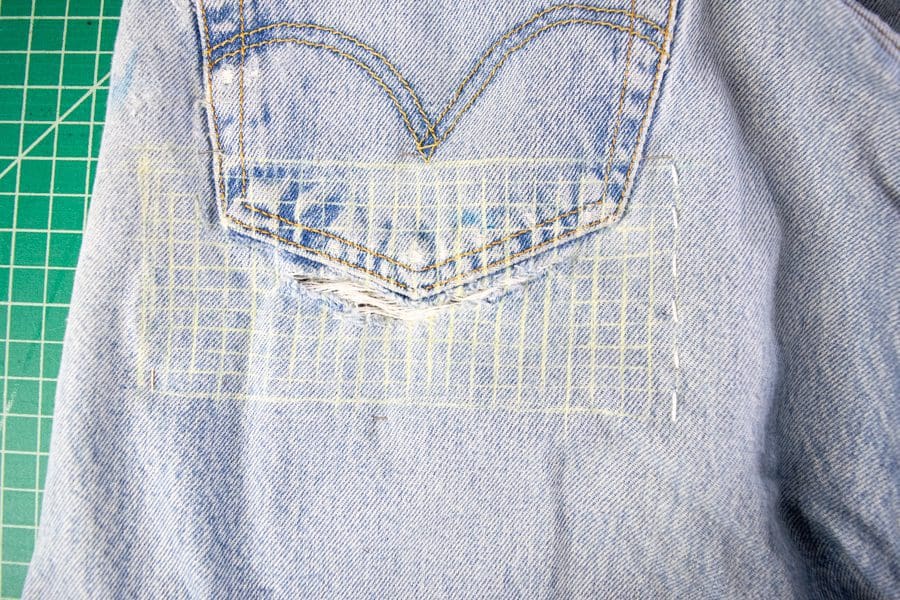
Then, I brought the needle up at the next intersection point, then back down at the next intersection point. I continued this pattern down the first column of my grid.
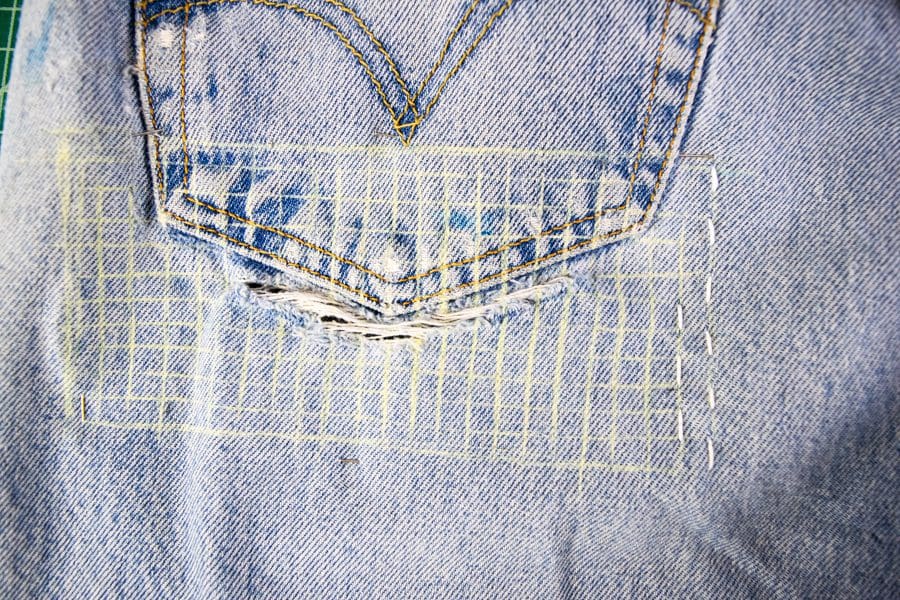
Then I continued up the next column, this time starting one line up from the bottom of the grid so that the stitches will be offset from the first column.
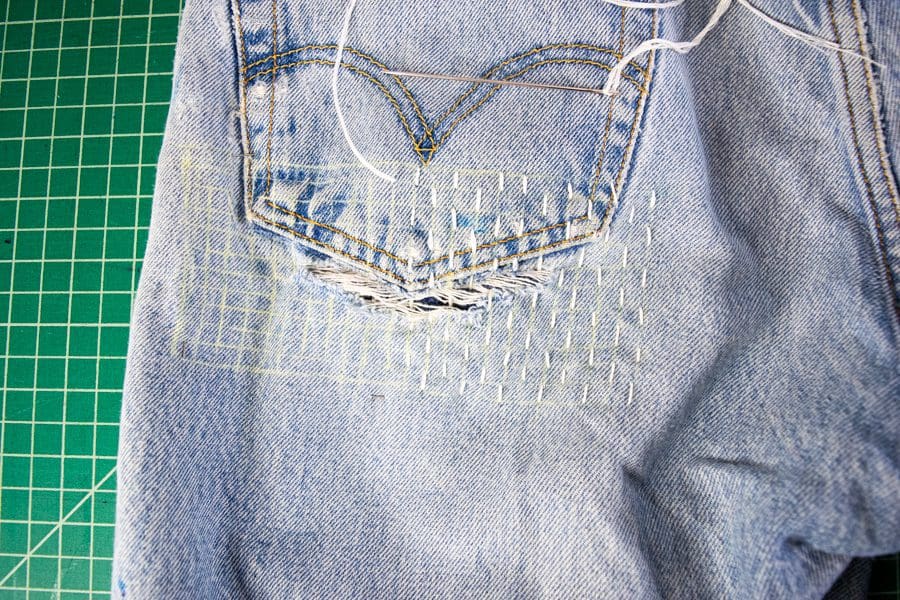
And I continued this pattern across the entire grid! If you run out of thread, just tie it off and start where you left off with a new thread. If you want a more detailed tutorial on how this stitch works, THIS is a great one!
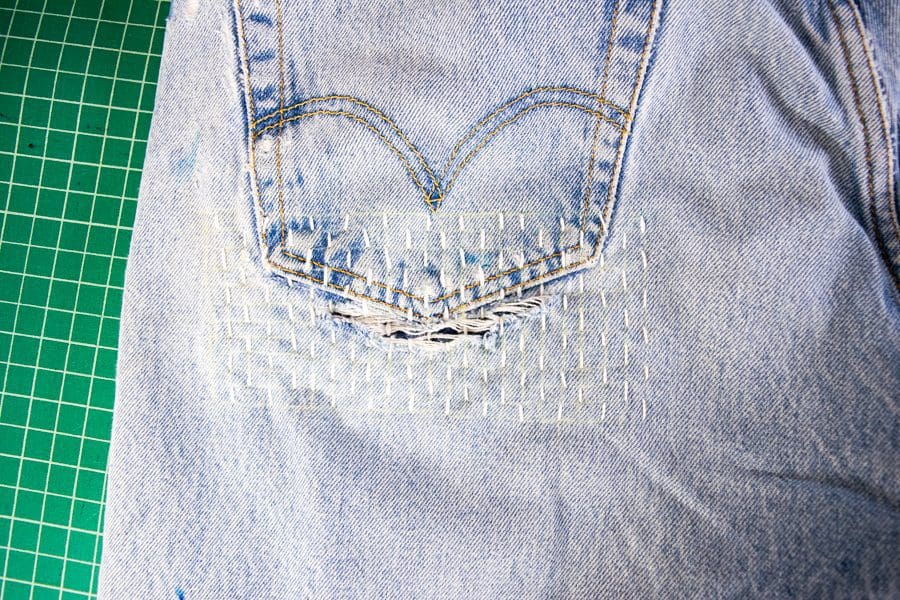
Fixing a Hole in Jeans with Embroidery
Maybe you like visible mending, but Sashiko mending just isn’t a look you like – you could repair your ripped jeans with embroidery! Embroidering a design over a hole or rip provides strong stitching that will keep the damage from worsening, plus you can choose a design that fits your style!
I absolutely love how embroidered flowers, and especially daisies, look on jeans – so that’s how I decided to mend this small hole in my jeans! They had a small rip by the front pocket that I thought would look great with a cute, embroidered daisy over it!
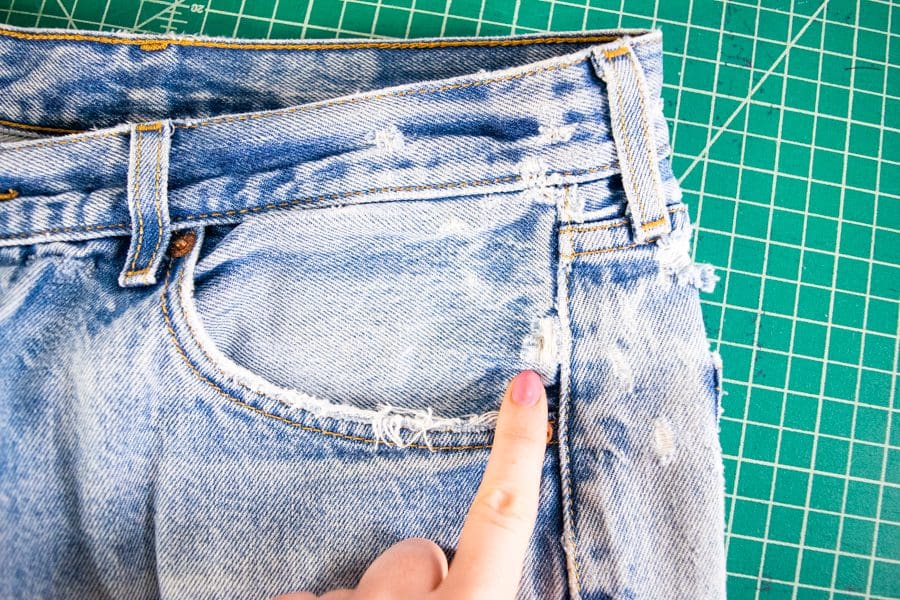
First, I drew in my daisy design over the rip with a pen. I freehanded the daisy, so it’s not even, but I think that adds to the charm of it! I also decided to go for half a flower so that it would look like it was peeking out from the side seam.
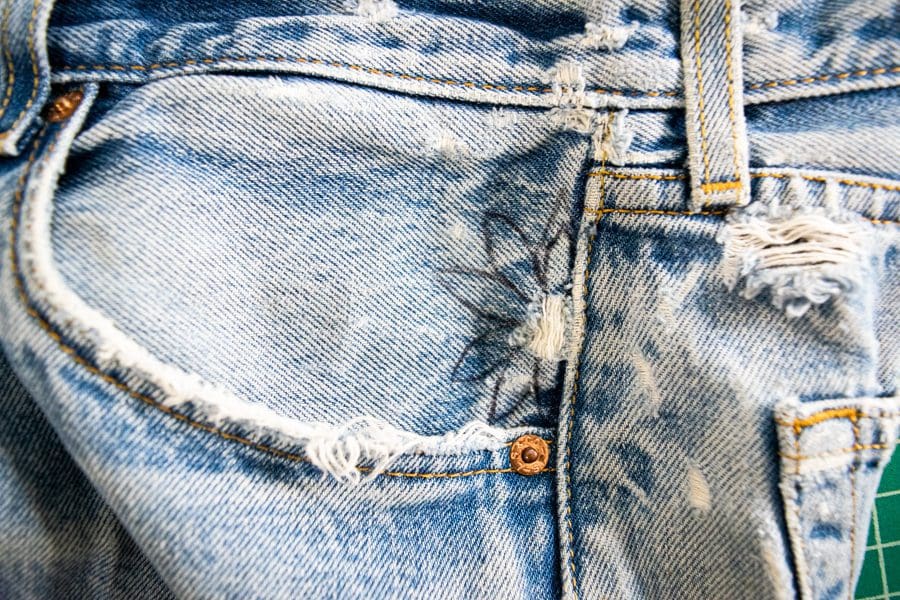
To fill in my daisy, I used white embroidery thread for the petals and yellow embroidery thread for the center. Also, just like the Sashiko mending, a tapestry needle or embroidery needle will be needed for this thicker thread. I followed THIS video tutorial on sewing the actual daisy.
Here’s how it looked once the petals were sewn on:
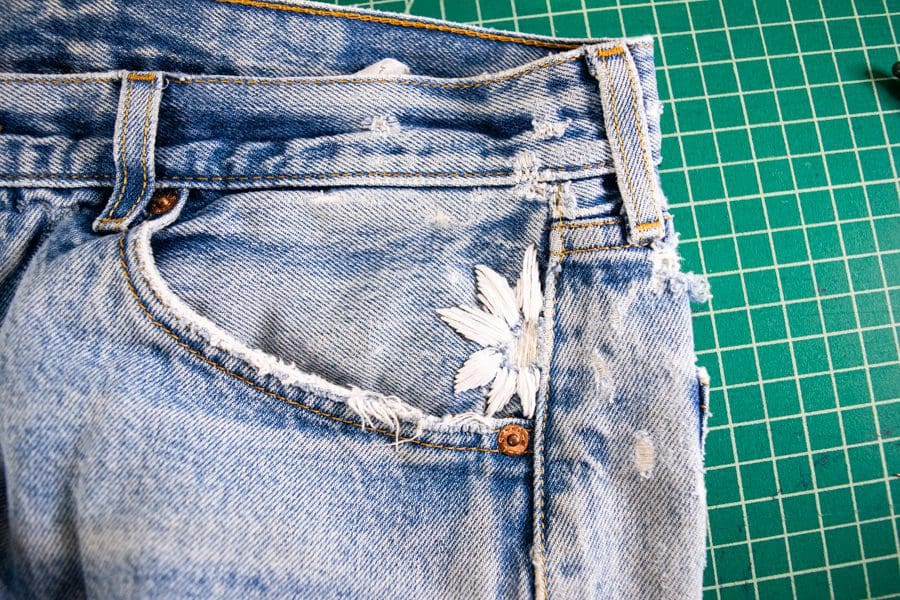
And here’s the finished daisy! Isn’t it cute?
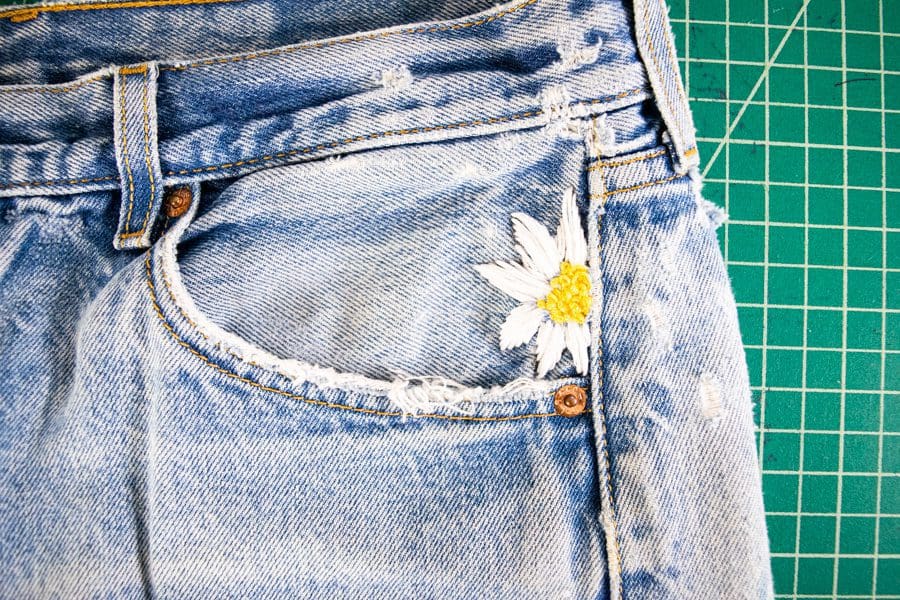
BONUS TIP: In a previous article on The Creative Sewist Blog, Christine Warren discussed how to use machine embroidery to fix large tears in jeans. To read her helpful tips, click HERE
I hope one of these methods will be perfect for mending your jeans! If you have any questions, comments, or would like to share your favorite jeans mending tip, be sure to leave them below – I would love to hear from you!
 Written by Carmen Barkley
Written by Carmen Barkley
Carmen is a self-taught sewist who has been sewing her own clothes for over 10 years. She enjoys using techniques that create beautiful and professional results. Carmen loves to help other garment sewists to level up their sewing through written and video tutorials!
CHRISTINE WARREN
Sewing isn’t just my job, it’s my passion. I’ve enjoyed sewing and needle working since I was very young.










